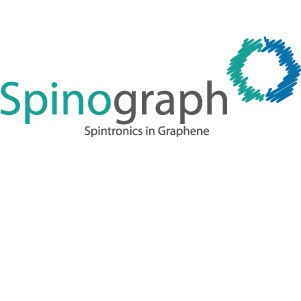SPINOGRAPH - Spintronics in Graphene

Work package 1. Spin Transport in Graphene. The electron spin lifetime in carbon materials is expected to be very long both because of the very large natural abundance of the spinless nuclear isotope 12C and the small size of the spin-orbit coupling. This even led to propose graphene as an optimal material to store quantum information in the spin of confined electrons. However, most of the experiments show that the spin lifetimes are in the range of nanoseconds, much shorter than expected from these considerations. One of the research goals of SPINOGRAPH is to understand this issue, which lies at the heart of the design of devices were graphene is used as a passive component to carry spin currents.
Work package 2. Magnetism in Graphene. The electron transport and optical properties of graphene are unique in many counts, because the two quantities that control these properties in other materials, the gap energy and the density of states at the Fermi level, vanish. The spin properties of graphene are also different.The formation of magnetic moments in magnetic materials is most often associated to the reduction of Coulomb repulsion for electrons occupying degenerate atomic levels in open d and f shells. This phenomenon is understood since the early days of quantum mechanics and accounts for our understanding of magnetic materials based on transition metals and rare earth.
In contrast, graphene is expected to host of a different kind of magnetic moment that occupies at least 3 atoms and is associated to degeneracies at the molecular level. These magnetic moments emerge at the zigzag edges of graphene as well as at vacancies and in the neighbourhood of chemisorbed atoms, such as hydrogen and fluorine. One of the goals of SPINOGRAPH research is to understand the emergence of local moments in functionalized graphene and their impact on transport properties.
Work package 3. Control and Manipulation of Electronic Spin in Graphene Devices. The manipulation of electronic spins has been demonstrated in other material systems, such as metals and semiconductors, by means of a large variety of techniques. In SPINOGRAPH, we intend to implement some of these ideas in graphene devices as well as to try new approaches taking advantage of graphene's unique features, most notably, its two-dimensional character. Specifically, we intend to explore the following ideas:
- Engineering ferromagnetism and/or spin-orbit coupling in pristine graphene by proximity to ferromagnets
- Spin transport in graphene nanoribbons
- Manipulating spin states in graphene quantum dot devices
International Iberian Nanotechnology Laboratory- INL - Portugal (Coordinator)
CIC nanoGUNE - Spain
Centre National de la Recherche Scientifique - France
University of Manchester - United Kingdom
Consejo Superior de Investigaciones Científicas AMO GmbH (Aachen)
Rheinisch-Westfälische Technische Hochschule Aachen - Germany
Rijksuniversiteit Groningen - Netherlands
Graphenea SA- Spain
